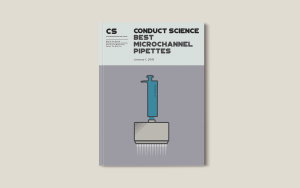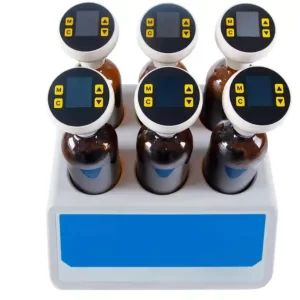
Best Microchannel Pipettes: A Comprehensive Guide
Introduction Pipetting, at first glance, would seem a fairly simple and easy task. Essentially described as glass or plastic tubes used to measure and transfer

One of the leading causes of malpractice suits is the failure or breakdown of the laboratory test workflow. An integral part of this workflow is test tracking, which encompasses procedures from the point of test requests, sample collections, analyses, reports, and patient treatment plans. The test tracking system is a mechanism that assures positive identification of a specimen throughout the ordering, collecting, processing, testing, and reporting phases.
A good test tracking system will greatly reduce the frequency of errors due to specimen mix-ups that lead to, among other things, reporting a result that belongs to someone else or loss of test results. This type of confusion can have serious consequences for patients and the laboratory. In most laboratories, test tracking is integrated within the larger laboratory information system (LIS), an automated workflow management system that records, manages, and stores clinical laboratory data.
The goals of implementing a tracking system are to enable automation, improve efficiency, facilitate traceability, standardize workflow, and enhance patient
safety. It is important to remember that tracking systems track the bar codes, not the specimens themselves, therefore, it is necessary to ensure that the correct barcodes are used and they remain associated with the asset (which includes requisition forms, specimens in tubes, or on slides and blocks) they represent.
The first step in tracking is the association of each asset to be tracked with a machine-readable identifier. The identifier is typically a bar code that allows for rapid and accurate entry of data into the tracking system, capturing information such as date/time, the location (lab) at which the asset was scanned, or the type of specimen e.g. hematological, tissue, urine, etc.
There are three major technical domains in the implementation of a test tracking system;
It is important to streamline all the procedures involved in the testing process before the implementation begins. This involves the outline of all the workflows, from obtaining the requisition form to the patient results report. Customization is done at this stage on the test tracking, depending on the workflow, which is in turn dependent on the type of lab test carried out.
The most common test tracking technology is the use of barcodes but recently, the more advanced radio frequency identification tags (RFID) are also being incorporated. Bar codes are machine-readable data representation patterns consisting of bars, blocks, and spaces while the RFID are small electronic devices that when affixed to an asset can store unique codes or characters about that specimen.
There is a variety of software to choose from, although the use of a tracking module already integrated into the lab’s LIS is more convenient. As for the hardware (devices such as scanners to read barcodes and radio-frequency signals, printers for barcode label printing), computers are necessary and they should be easily accessible to stations where they are required.
For successful implementation of test tracking programs, there is a need for a ‘’buy-in’’ from all users because human non-compliance, rather than technological issues, is frequently the cause for the failure of tracking solutions. Thorough training of laboratory staff is necessary and individuals will need to overcome training curves and understand the importance of compliance with the tracking system and effective patient care.
A proper test tracking system should include three components;
The test requisition captures the patient’s information and the physician’s requests.
It contains;
This is a record of all patient specimens as they are being collected, received, processed, and tested by the laboratory. This ensures that all records of patient specimen collections and test analyses are under one file. The test record can be a single form divided into columns with each new patient specimen entered in a new row, computer or billing logs, or a filing system for requisitions, records, and reports.
It should include;
The test report is the final form that is sent to the physician or any other person who ordered the test. Some laboratories require the final report to be reviewed by a supervisor before it is sent. If the laboratory does not have access to the patient’s chart, the original report or an exact duplicate test report should be filed in the laboratory so that it can be easily retrieved.
The test report should include:
There are several advantages to implementing a tracking system. This includes;
The laboratory director is in charge of periodically evaluating the test tracking system to be sure that it is being followed and that it is preventing specimen mix-ups. This is part of the laboratory’s quality assessment and assurance program, it should be a well-documented process, whose aim is to point out and rectify areas of weaknesses in the system.
The areas to be evaluated and audited include;
The mishandling of the test workflow and delays that are caused by misplaced samples and test results have far-reaching repercussions. For the patients and their relatives, poor test result handling can lead to distress, delayed treatments, unsatisfactory care experiences, the inconvenience of additional appointments to repeat blood tests or make complaints. Even worse, it can cause harm to patients due to delayed clinical judgments and treatment decisions. On the other end, hospitals and physicians can experience aftermaths ranging from loss of trust by patients to litigation claims and sanctions by medical regulators. A good test tracking system minimizes these risks by ensuring proper specimen and result identification and an overall increase in efficiency of the testing process.

Introduction Pipetting, at first glance, would seem a fairly simple and easy task. Essentially described as glass or plastic tubes used to measure and transfer

Resource Identification Initiative: A Key to Scientific Success and Analytics The key to success can be found in the essential principles of the Resource Identification

INTRODUCTION AND BRIEF HISTORY One of the most important pieces of equipment in the laboratory is the centrifuge, which facilitates the separation of samples of

INTRODUCTION AND BRIEF HISTORY One of the most important pieces of equipment in the laboratory is the centrifuge, which facilitates the separation of samples of






DISCLAIMER: ConductScience and affiliate products are NOT designed for human consumption, testing, or clinical utilization. They are designed for pre-clinical utilization only. Customers purchasing apparatus for the purposes of scientific research or veterinary care affirm adherence to applicable regulatory bodies for the country in which their research or care is conducted.